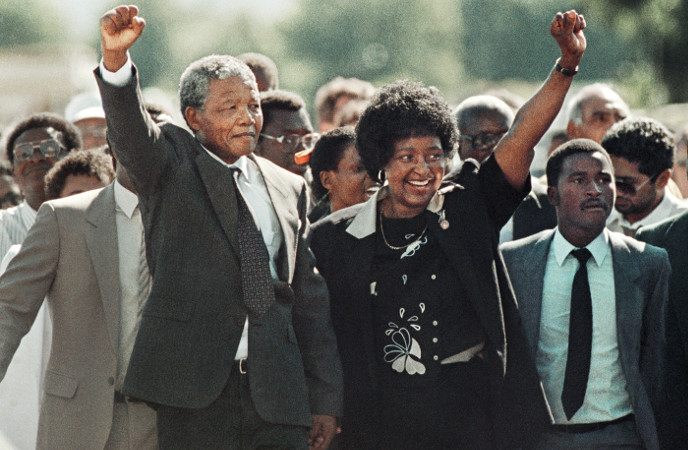
An unprecedented and comprehensive historical overview of the pictorial response to apartheid, designed by the ICP International Center of Photography in New and curated by Okwui Enwezor, adjunct curator at ICP in the past and today Director of Haus der Kunst in Munich.
Based on more than six years of research, this landmark exhibition includes the work of nearly 70 photographers, artists, and filmmakers and examines the aesthetic power of the documentary form – from the photo essay to reportage, social documentary to photojournalism and art – in recording, analyzing, articulating, and confronting the legacy of apartheid and its effect on everyday life in South Africa.
Complex, vivid, evocative and dramatic, Rise and Fall of Apartheid covered more than 60 years of powerful photographic and visual production that form part of the historical record of modern South African identity. Accompanied by more than 500 photographs, artworks, films, videos, documents, posters, and periodicals, the exhibition brought together a rich tapestry of material, many of which have been rarely shown together, to examine and document one of the most absorbing historical eras of the 20th century.
Apartheid, the compound Dutch word meaning separate (apart) and neighborhood (heid), was the political platform of Afrikaner nationalism before and after World War II. It created a political system designed specifically to promote racial segregation and enshrine white domination. In 1948, after the surprise victory of the Afrikaner National Party, apartheid was introduced as official state policy and organized across a widespread series of legislative programs. Over time, the system of apartheid grew increasingly ruthless and violent towards Africans and other non-white communities. It not only transformed the modern political meaning of citizenship, it invented a wholly new society in both fact and law. The result was a reorganization of civic, economic, and political structures that penetrated even the most mundane aspects of social existence – from housing, public amenities, and transportation, to education, tourism, religion, and businesses. Apartheid transformed institutions, maintaining them for the sole purpose of denying and depriving Africans, Coloureds, and Asians of their basic civil rights.
A central premise of this exhibition is that South African photography, as we know it today, was essentially invented in 1948. The exhibition argues that the rise of the Afrikaner National Party to political power and its introduction of apartheid as the legal foundation of governance changed the pictorial perception of the country from a purely colonial space based on racial segregation to a highly contested space based on the ideals of equality, democracy, and civil rights. Photography was almost instantaneously alert to this change and in turn transformed its own visual language from a purely anthropological tool to a social instrument. Because of this, no one else photographed South Africa and the struggle against apartheid better, more critically and incisively, with deep pictorial complexity, and penetrating insight than South African photographers. It is the goal if this exhibition to explore and pay tribute to their exceptional photographic achievement.
From the work of members Drum Magazine in the 1950s to the Afrapix Collective in the 1980s to the reportage of the so-called Bang Bang Club, included in the exhibition are the exceptional works of pioneering South African photographers including Leon Levson, Eli Weinberg, David Goldblatt, Peter Magubane, Alf Khumalo, Jürgen Schadeberg, Sam Nzima, Ernest Cole, George Hallet, Omar Badsha, Gideon Mendel, Paul Weinberg, Kevin Carter, Joao Silva, and Greg Marinovich.
Along with them, the exhibition offered an overview of the contemporary scene with artists such as Adrian Piper, Sue Williamson, Jo Ractliffe, Jane Alexander, Santu Mofokeng, Guy Tillim, Hans Haacke, and 10 amazing video animations by William Kentridge.
In addition, the exhibition featured the works of a new generation of South African photographers such as Sabelo Mlangeni and Thabiso Sekgale, who explored the impact of apartheid as it continues to resonate today.
The exhibition was possible with support from Mark McCain and Caro Macdonald/Eye and I, The Andy Warhol Foundation for the Visual Arts, the National Endowment for the Arts, Joseph and Joan Cullman Foundation for the Arts, Deborah Jerome and Peter Guggenheimer, the New York City Department of Cultural Affairs in partnership with the City Council, and from the Robert Mapplethorpe Foundation in honor of 30 years of committed ICP service by Willis E. Hartshorn.